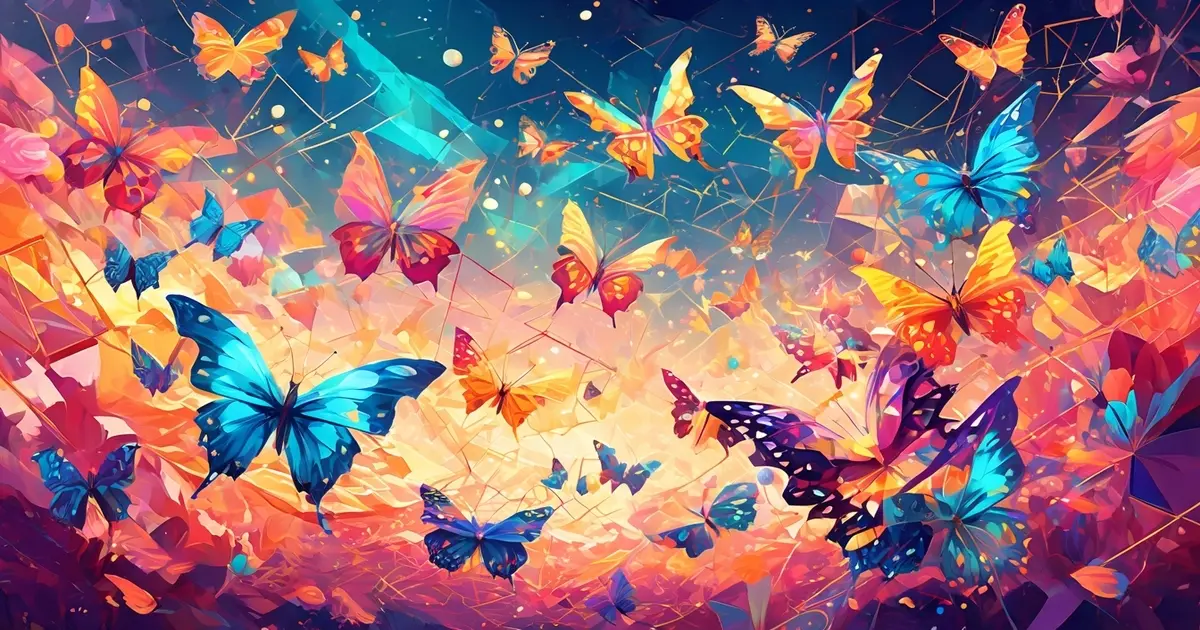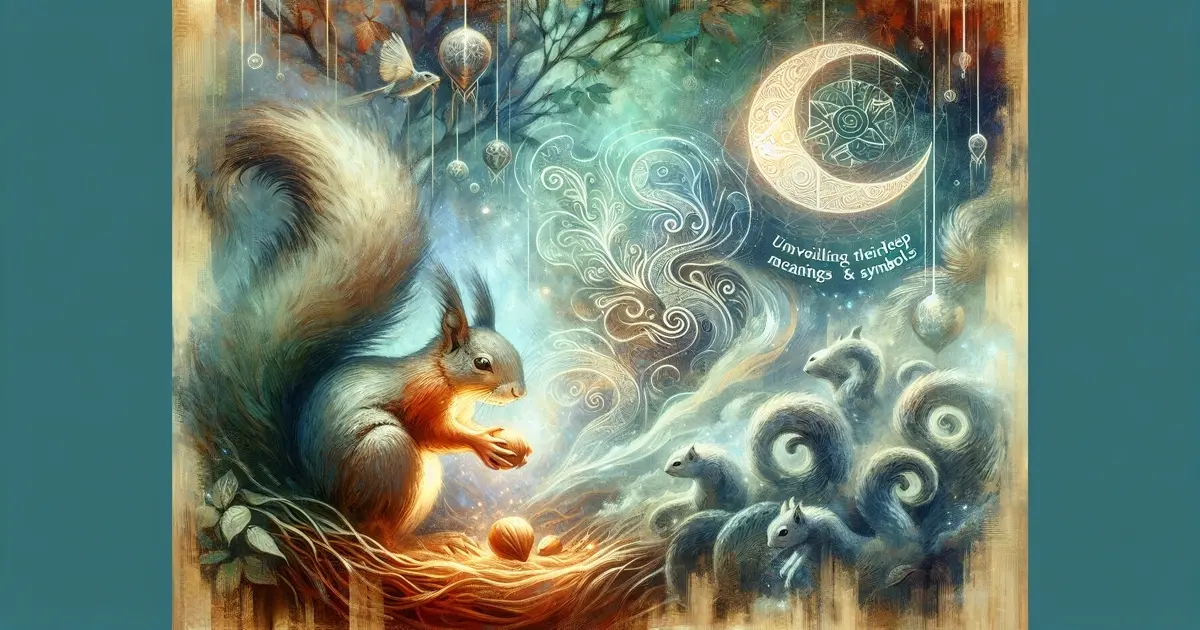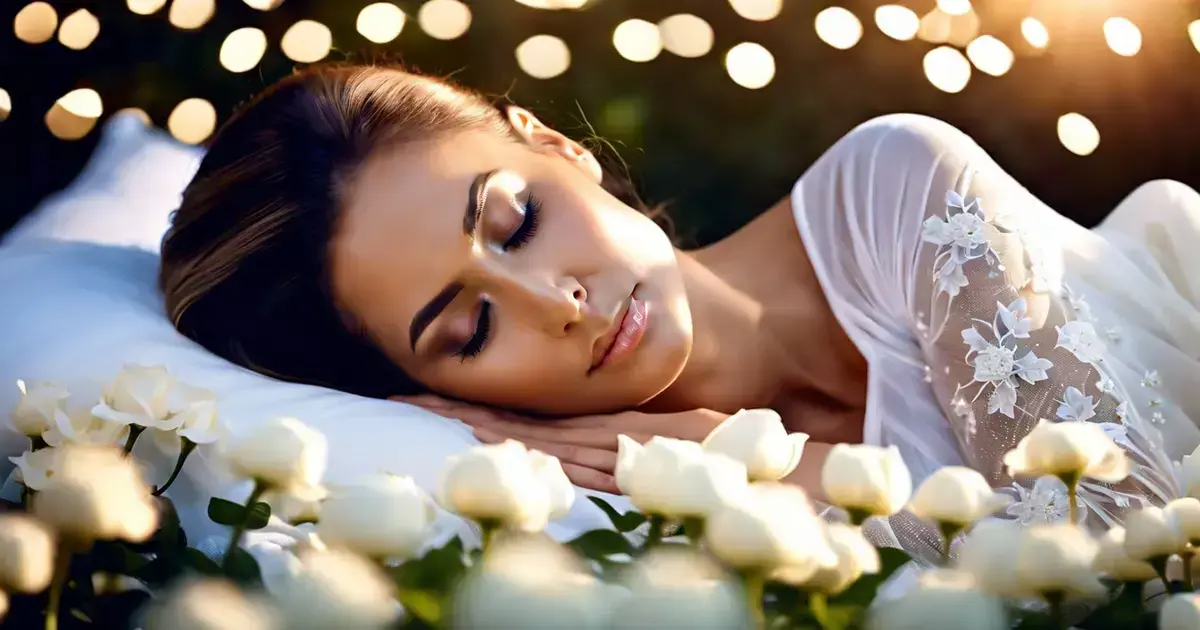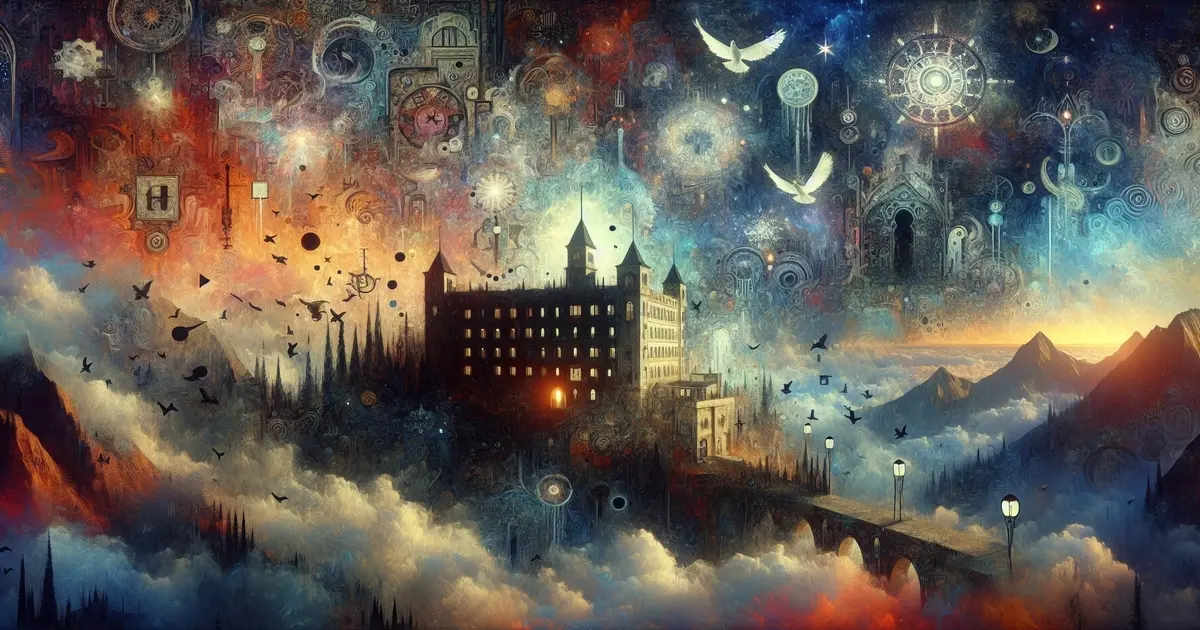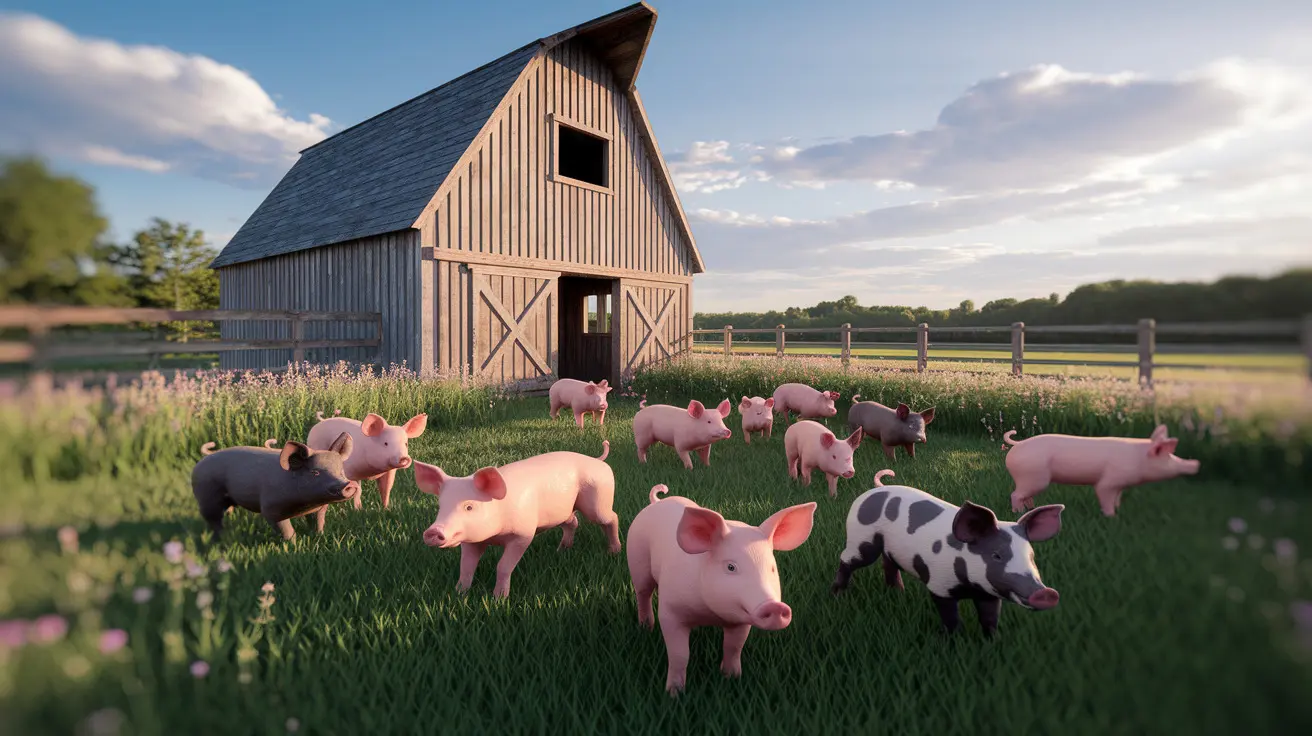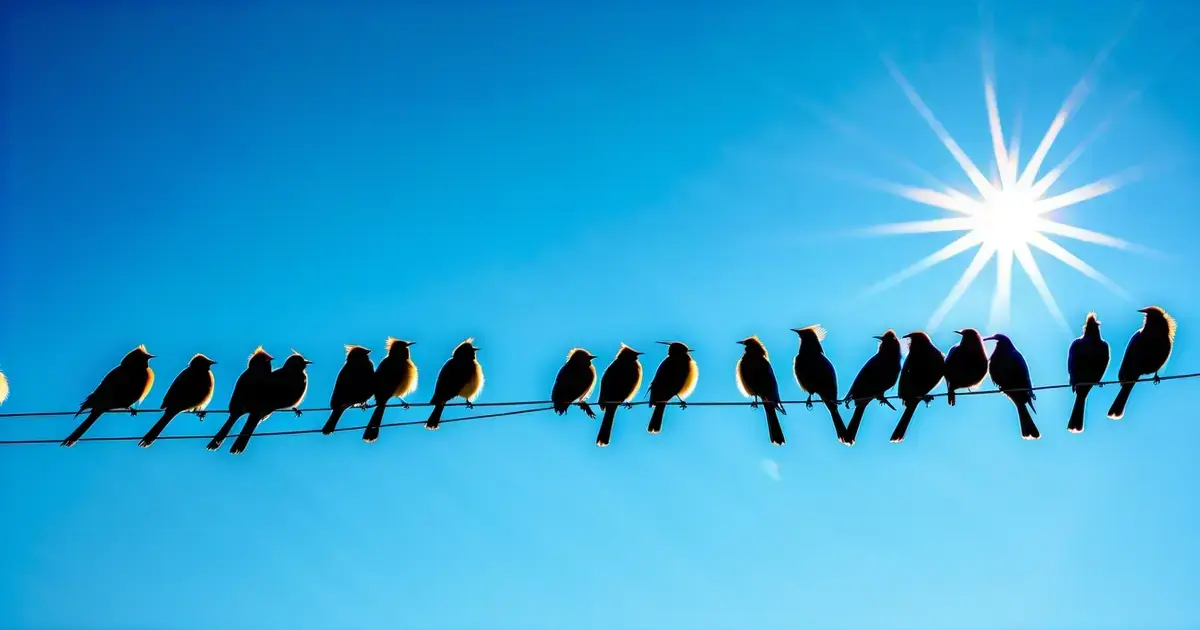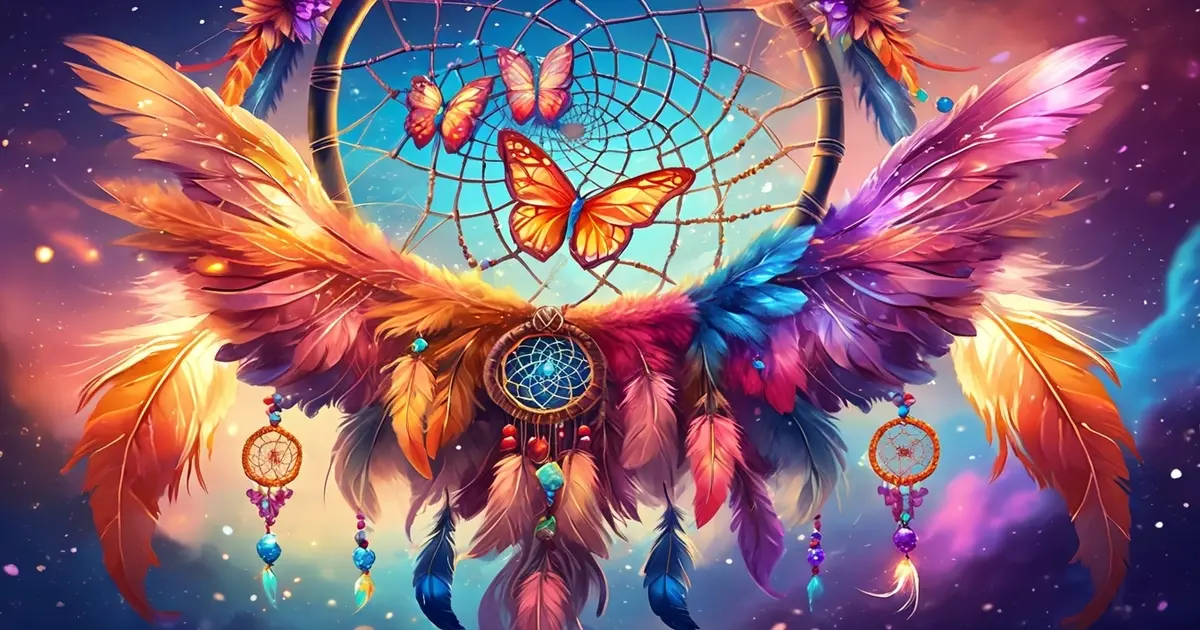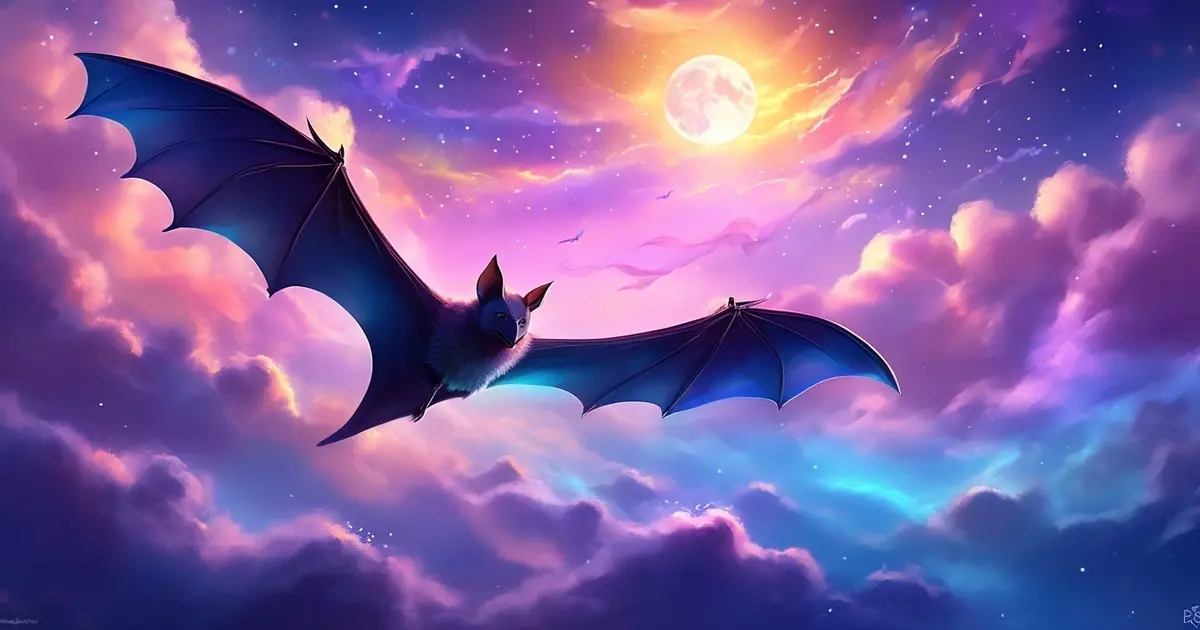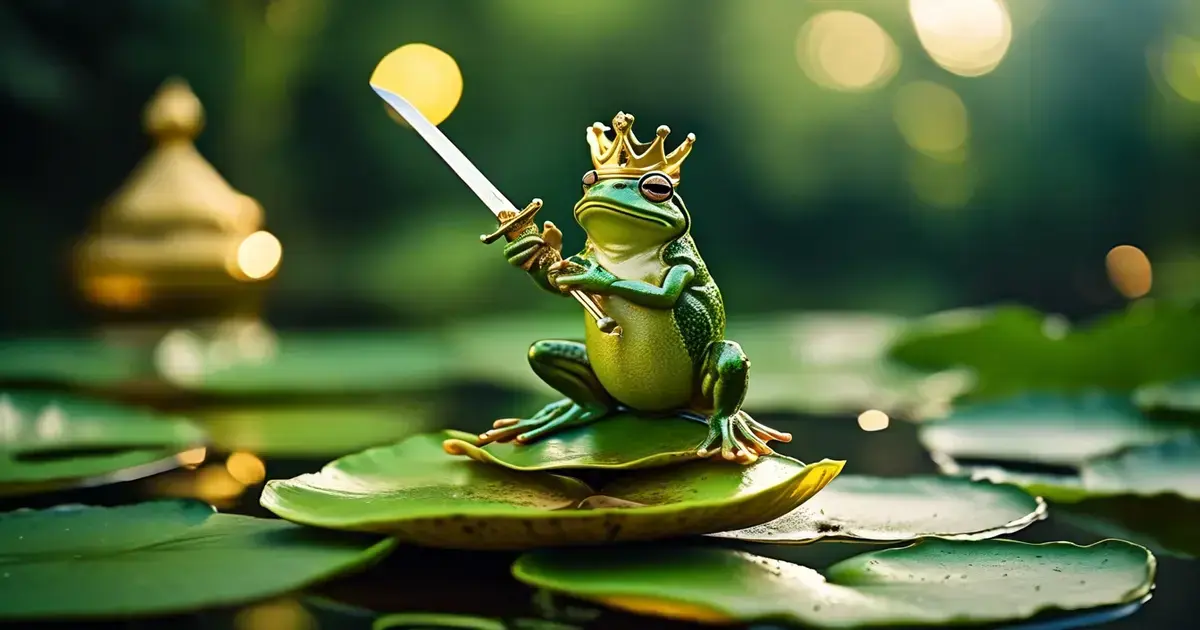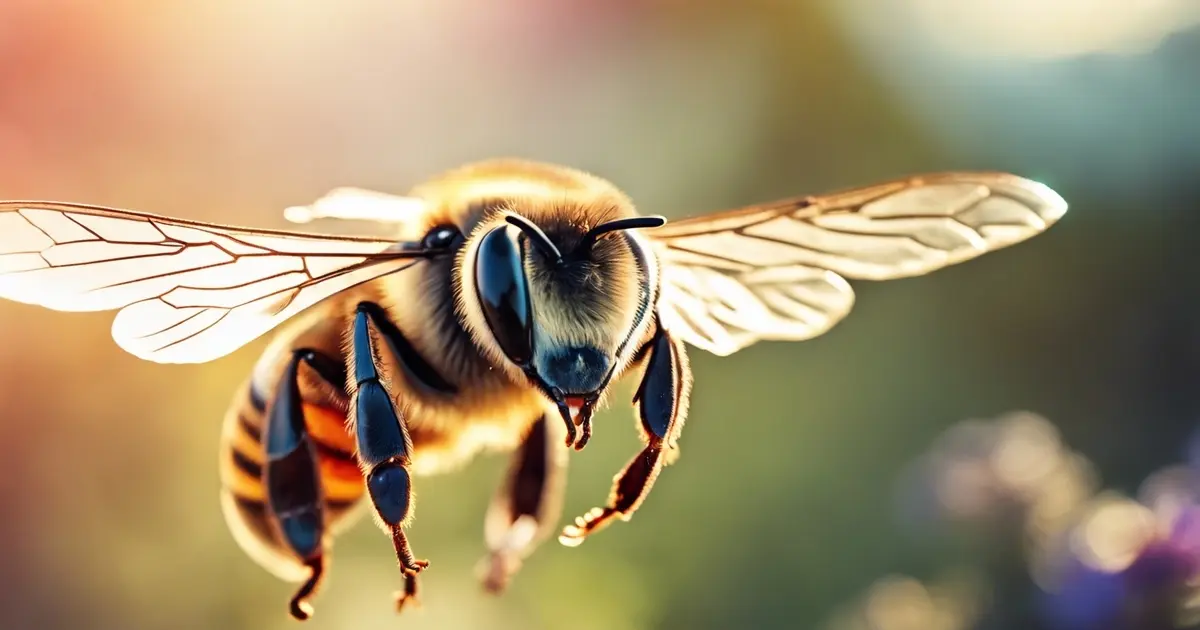Dreams About Flowers: Unveiling Their Deep Meanings & Insights
Unlock the hidden meanings of dreams about flowers. Discover the spiritual significance and interpretations behind different types of flowers.

“ We associate roses with love, lilies with peace, sunflowers with hope, and droopy petals with loss or strain. “
Dreams about flowers – night vignettes in which blooms emerge as iconography linked to emotion, remembrance, or transformation. We associate roses with love, lilies with peace, sunflowers with hope, and droopy petals with loss or strain. Color matters: red hints at passion, white at clarity, yellow at joy, and blue at calm. Context gives meaning too, like when a stranger offers you flowers, or you walk through the field, or you work in your garden at home. Culture and personal history color symbols, so their meanings differ between locations and even from family to family. Typical metaphors are growth, cycles, and nurturing yourself or others. The following two sections map varieties, hues, and behaviors, then demonstrate how to jot down habits and interpret them in the present day.
Key Takeaways
- Let's get to the dream meanings, which vary based on context and action, such as receiving, giving, planting, wilting, or blooming. Note what you did with the flowers and who was involved to help elucidate the message.
- Color directs the reading of cultures and temperaments. Trace prevailing colors like red for love, white for innocence, yellow for hope, blue for peace, and black for death.
- Gaze past petals to roots, stems, thorns, buds, and leaves for hints on support, boundaries, and growth. Let healthy growth indicate pushing through and tackling thorns or wilt cues to set limits or course-correct.
- The environment sets the mood of the dream. Contrast open fields, home vases, or wastelands to measure liberty, conservation, tenacity, or abandonment.
- Immediately after awakening, maintain a simple dream journal of flower types, colors, scents, people, and feelings. Read the entries weekly to identify themes that resonate with present goals or worries.
- Transform insights into action in everyday life. Mark blooming motifs with appreciation, forward motion, and counter-wilting or macabre visuals by testing stress, healing connections, or reorganizing priorities.
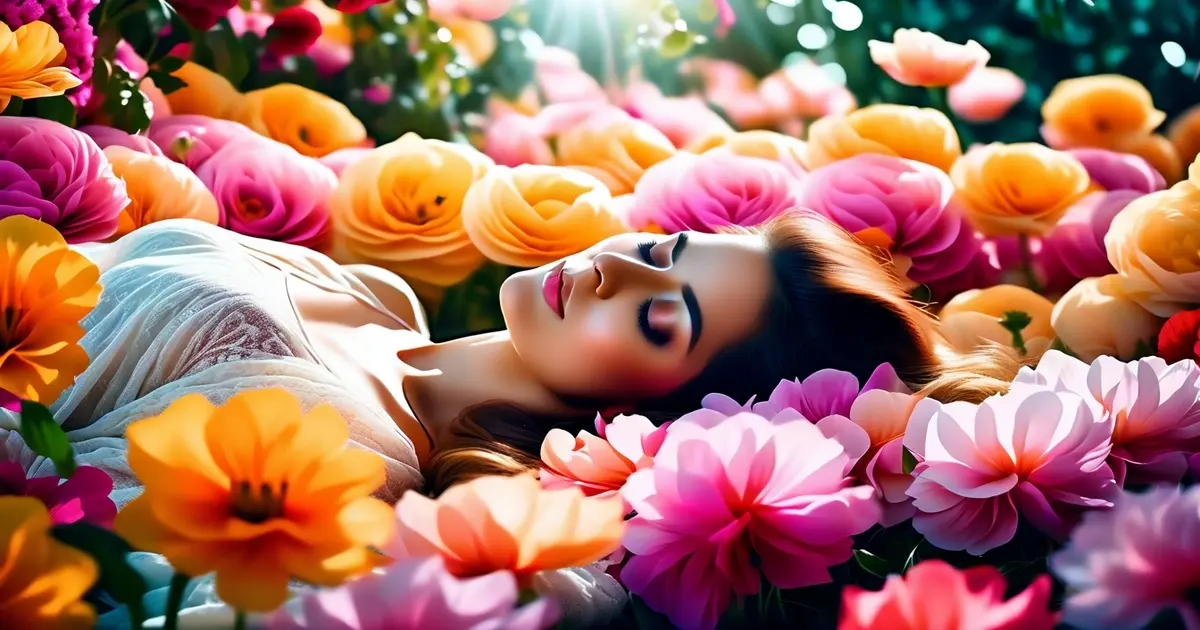
Decoding Your Floral Dreamscape
Dreams about flowers typically reflect longings, moods, and transitions, often symbolizing fabulous flowers through their colors and scents. Each flower, whether blue or vibrant orange blossom, carries its significance, suggesting themes of development, union, and fruition. As reproductive organs of the plant, their symbolism is deeply rooted across cultures. As noted in Vanga's dream book, engaging with these beautiful flowers can alter their meanings, highlighting the importance of flower arrangement in dream interpretation.
1. Receiving Flowers
Giving a bouquet frequently indicates gratitude, respect, or an imminent favor. One stem can express specific esteem — a pointed thank-you or a subtle love note.
Colors fine-tune the message: Red flowers may flag desire and a passionate bond. White flowers can indicate genuine assistance from friends. Pay attention to the flower variety—jasmine could indicate a date on the cards, daisies can mirror bashful attraction. In contrast, sunflowers screw with my head a bit, sometimes reading differently depending on the season and your mood upon receiving them.
Employ this scene to verify how you witnessed and validated your sense. If the giver is anonymous, it may indicate hidden connections or silent admirers at the office or household.
2. Giving Flowers
Giving someone colorful flowers usually signals dedication, concern, or an attempt to make amends. A bright bouquet can celebrate a milestone—promotion, wedding, or anniversary—while a specific flower targets intent: red roses for romance, white lilies for purity, daisies for gentle regard. See their face. A kind smile might reflect confidence that your attempt will resonate. A calm or confused gaze can indicate concern about boundary-crossing or imbalanced connection effort.
3. Planting Flowers
Planting seeds or bulbs is a starting point: new goals, skill-building, or a fresh chapter. It corresponds to a process—pollination and fertilization in the natural world—so patience and phased reward count.
Type polishes it. Sunflowers usually indicate hope or loyalty, but their mood can change with the season and your disposition. Choose meaning: sunflowers for joy, lilies for purity, jasmine for romance.
4. Wilting Flowers
Hungry deer symbolize financial concerns, and withered blooms frequently caution of drooping endeavors, evaporating connections, or lost opportunities.
Dead petals can mourn or close a chapter.
Fake or droopy flowers can signal stressed relationships or impending grief.
Track color and type: A red rose gone limp can indicate lost passion or a need to tend to intimacy.
5. Blooming Flowers
Full blossoms signify expansion, consistent victories, and deep relationships. Live flowers frequently symbolize life, peace, and happiness.
A rich garden or field—Miller took this as a positive sign—may suggest prosperity and luck in the future. Vibrant hues and a delicious aroma may reveal hope and an uplift in spirit.
Take this dream as a gentle push to support your abilities, maintain your stride, and believe the labor is fruitful.
The Language of Color
Flower dreams sit within fundamental plant biology: angiosperms—the most diverse land plants—make colorful flowers and fruits, use vessel elements, and store endosperm in seeds. Their flowers can bloom singly or in an inflorescence (cluster; not fluorescence). Pollination is variable, even by water in hydrophily, as in Vallisneria spiralis. Significance is cultural and frequently metaphorical — luminous tones incline affirmative, while somber colors can imply gloom or secret desires. Mixed flowers usually indicate compassion, kindness, and balance. Specific links are conventional and possibly uncited, while dream interpretation experts suggest that floral meanings can vary widely. Botanists chart shape with floral formulae and diagrams as preservation concerns arise with climate oscillations.
| Color | Common dream meanings |
|---|---|
| Red | Passion, romance, ambition, or anger |
| White | Purity, sympathy, remembrance, clarity, new starts |
| Yellow | Friendship, optimism, good fortune, happy news |
| Blue | Calm, healing, spiritual depth; dark blues for grief |
| Green | Growth, renewal, jealousy, need for patience |
| Orange | Joy, energy, encouragement, social warmth |
| Purple | Dignity, mystery, insight, private thoughts |
| Black | Hidden desires, fear, loss, deep change |
| Mixed | Kindness, empathy, balanced life, inclusive outlook |
Red Hues
Red flowers, particularly red roses, often symbolize intense emotion—passion, romance, or even rage—making a vase of red roses a powerful declaration of love or attraction that is hard to resist. A single scarlet flower can border private worship, while a meadow of scarlet flowers, such as poppies and tulips, can represent communal acclaim or respect. In the dream world, red petals can denote areas of your life driven by courageous ambitions or impulsive behavior, helping you to identify where determination and danger lie. Remember, red roses are prevalent in real life during Valentine's Day and anniversaries, which can influence your dream imagery.
White Hues
White lilies or carnations are associated with innocence and spirituality.
White blooms in a wedding aisle or prayer hall can indicate peace, devotion, or a support you rest upon.
White blossoms could signal new beginnings, a desire to let go, or a craving for evident truths. Suppose a commonly colorful flower appears in white. In that case, it can compel us to take a second look at what seems transparent but isn't. Numerous cultures adopt white as a color of sympathy or remembrance.
White bouquets in dreams can push you to prove purpose, sincerity, and your openness.
Yellow Hues
Sunflowers or daisies are tied to friendship and good luck.
A yellow bud or sunflower bouquet can signify hope, happiness, and bright-looking plans.
Yellow blooms usually insinuate joyous tidings, productive connections, or an almost victory.
Highlight in yellow where you felt backed, upbeat, or sparked by ideas.
Blue Hues
Cornflowers, hydrangea, delphinium, and blue orchids frequently exude tranquility, balance, and profundity. Light blues feel like sleep, while darker blues can suggest mourning or deep contemplation. Blue dreams could demand equilibrium, air, and calmer rest.
Blue blooms can signal imaginative inspiration or silent meditation. Listen to your gut without hurrying.
Black Hues
Black blooms or deep-hued petals can signal enigma, veiled desires, or grief.
At a funeral or in a horror scene, they might caution of grief, endings, or a change you can't evade.
Their contrast with white or red can show split aims: caution, desire, hope, and doubt. Utilize that divide to identify the actual problem.
Note: Orange gerberas suggest joy, marigolds, lilies, and orange roses add drive. Green can offer growth, but envy as well! Humans have had flowers for food, cures, rites, and art for millennia – from some of the earliest land plants to our modern-day crop plants and vines. Grasses even accommodate low CO2 in hot, arid regions.
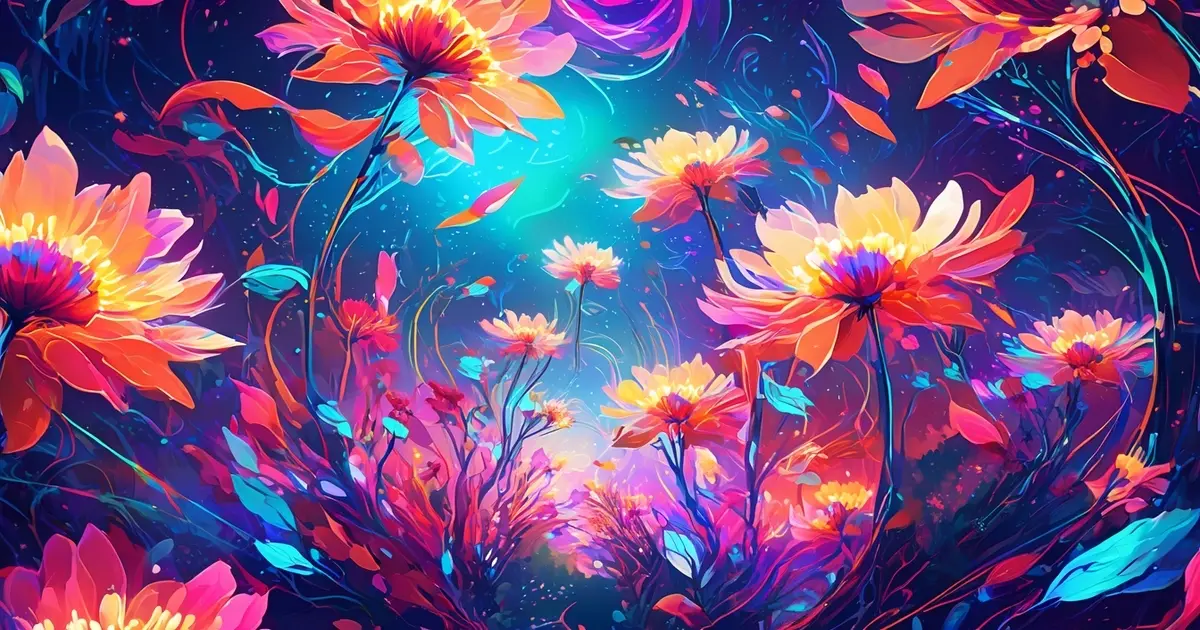
A Botanical Glossary
A botanical glossary is a pocket guide to plant words and definitions, handy when a dream's picture depends on specifics. It describes plant structures (roots, stems, leaves, sepals in the calyx that protect buds and support petals, the corolla), types of plants (colorful flowers, trees, grasses), lifespan (annual vs. evergreen), and growth habit. The glossary also covers anthesis and other phases of flower development and pollination—the pollen movement by wind, water, animals, or self, resulting in fertilization and seed set, which are central to flower biology and agricultural production. Floral diagrams, pioneered by A. W. Eichler, plot organ number, fusion, and arrangement, assisting in deciphering angiosperm form and evolutionary history.
- Color: Red often signals passion. White indicates calmness and innocence. Orange signifies ambition or pride. Pink dips toward concern and gratitude.
- Scent: strong, sweet scents may flag romance or memory. Faint or lack of scent can foreshadow distance or loss.
- Context: Bouquets, gardens, funerals, altars, wild fields, or wilting stems reshape meaning; cultural frames (e.g., biblical gardens as spiritual growth) and personal history count.
The Rose
Red roses in dreams often indicate love, romance, and burning desire. Pink tilts to respect or appreciation, and white to innocence or a fresh beginning, such as a new relationship. Thorns can display tests or brutal realities in a relationship.
One rose can designate a definite purpose. A bouquet can imply reciprocation or a public promise. A whole rose garden means a season of love or labor.
Scent intensifies the signal. A luscious scent can remind one of first love. A blasted, thorny, thistleless stem may warn of an ache to come.
Ancient dream books associated roses with ritual, medicine, and decoration—human uses that ethnobotany still traces today. Personal connections, such as a bridal bouquet, will trump shorthand definitions.
The Lily
White lilies symbolize purity, renewal, and a silent spiritual reset. At funerals or prayer moments, they can represent peace or comfort, embodying the essence of beautiful flowers. Pink lilies suggest considerate treatment and constant affection, while vivid orange flowers may demonstrate assurance or vanity seeking shrewd direction. In dream interpretation, lilies encourage a glance toward internal healing, seasonality, and balance—themes that floral biology examines in bloom's onset, persistence, and end. Even the sepal's stalwart sentry role can reflect the hard edges you require to flourish.
The Sunflower
Sunflowers typically symbolize optimism, warmth, and a clear perspective. A meadow or bouquet can indicate abundance, favorable chances, and fruitful schemes.
Their heliotropic face is a cool signal for searching for light, mentors, or solid information. To pollination biology, showy heads provide pollinator rewards; in dreams, they can nudge you to give thanks and share wins. White daisies and Gerberas peek through as indications of blissful days to come, and white blossoms in general can denote peace and purity.
The Lotus
Lotus signals awakening, rebirth, and rise after mud.
A new bloom can signify endurance, wisdom, and persistent development. The lift from murky water is strong: rise above complex moods or old fears.
Within certain traditions and biblical frames, gardens signify nearness to God. The lotus can act as that inner road. Plant development exhibits emergent properties from rudimentary components; your plot can develop similarly, fragment by fragment.
Meanings change with experience. Your previous experience with ponds or temples, or studying glossaries, will condition the reading. Annual vs. Evergreen cycles can signal brief experiments or enduring commitments.
Beyond the Petals
Flowers in dreams can indicate growth, beauty, and cycles of life. Beyond petals–the corolla, which can sometimes fade into sepals to form tepals, or reduce in size in wind-pollinated taxa–stand the bracts and peduncle that suspend aspirations.
- Roots: your support network, family ties, and inner values that build resilience.
- Seeds: plans, stored energy, and beliefs waiting for the right conditions.
- Stems: daily habits and resources that carry goals from idea to result.
- Thorns: boundaries, risk checks, and signals to protect time or trust.
- Buds: new chances and the first signs of change.
- Leaves: energy balance, health, and learning.
- Petals: attraction, social display, and short-lived peaks.
- Fruit: outcomes, legacies, and how results spread to others.
Looking beyond petals focuses on stories of resilience and transformation.
Roots & Seeds
Roots and seeds could signify fresh beginnings or intense desires. Planting seeds in a dream often parallels beginning a project, a course, or a relationship.
Broad, vigorous roots indicate safety, proper grounding, and strong connections to others. Spare or brittle roots can indicate strain, unstable ground, or solitude post-trauma.
Seeds are hope and a blueprint for future growth. In botany, seeds produce fruit in flowering plants, propagating new life in some dream, perhaps reverberating with professional achievements or a kids-in-college-timed-to-a-season vibe.
Color counts. Greenery around nearby can cause jealousy. White flowers by roots may exhibit slight negativity. Marigolds may foreshadow a sunny road ahead.
Stems & Thorns
Stems represent support, strength, and the path from desire to harvest, like how colorful flowers symbolize various emotions and meanings. A tall, firm stem can denote advancement, while a bent or hollow stem may indicate lag or exhaustion. Thorns are applicable warnings: they ask you to weigh risk, set terms, and pace trust in work or romantic relationships. In botany, floral morphology charts how sterile and fertile leaves form and shield the flower. The ABC model and Goethe's foliar theory connect organs to transformed leaves and genetic signals, similar to how your habits encode results, much like the vibrant hues of mixed flowers in nature.
Buds & Leaves
Buds suggest new possibilities, or a transformation is imminent. Closed buds represent preparation, opening buds indicate momentum, and full bloom might coincide with brief peak windows. Leaves show vitality: green, glossy leaves point to health and positive energy; wilted leaves can mark burnout or a missed shot. Purple flowers might get you to push a bit of self‑knowledge or spiritual check‑in, and some readers associate floral wheels with Chakras along the spine.
As buds progress, observe timing. Flowers can label a season of living. Fruits in dreams represent outcomes and how your labor nourishes others—such as apples or bananas—and hold cultural significance. Plant systematics reminds us that diversity matters. Your route could be different, but still solid.

The Dream's Setting
Settings set a mood and suggest a life context–frequently intensifying or muting what flowers signify. Fresh, colorful flowers indicate peace and happiness, while wilted or fake ones suggest stress. The color and type of flowers also count—red can signify lust, while blue flowers can signal earnestness or an invitation to look closer if the blossom is generally colorful. Botany offers cues: the stamen (part of the androecium) holds pollen on its anthers; the perianth—calyx and corolla, or tepals—shape how we read beauty and show. Pollination syndromes connect traits to pollinators, but they're not flawless predictors. Names and types return to Linnean taxonomy, a rank-based system that helps us understand nature's rich color.
| Environment | What you see | Why it matters | How it shapes meaning |
|---|---|---|---|
| Field | Wild, open blooms | Freedom, many paths | Hope, growth, new ties |
| Vase | Arranged stems | Order, memory | Kept joy, set limits |
| Wasteland | Sparse blossoms | Contrast, grit | Renewal, risks noted |
In a Field
A wild or sunflower field tends to translate as liberty, prosperity, and optimism, evoking the imagery of colorful flowers that symbolize joy. Big, bright washes hint at an open road and opportunities, while flower diversity can reflect your receptivity to strangers and concepts, as mixed flowers indicate varying attractions to pollinators. Strolling through a meadow signifies pure bliss, sun-dappled afternoons, and loveliness no shine required.
Color guides tone: red may hint at a strong pull or a new flame. White in open fields can reveal genuine connections. Sunflowers, light-tracking, can denote changing aspirations, while blue flowers can suggest tranquility and peace.
In a Vase
Floral arrangements sing to the occasion or the moment preserved, often featuring colorful flowers that signify a wish to stash away a good mood or anticipate relief when concerns abate. Freshness versus wilt reflects your condition or a relationship's vitality. The vase color and flower type, such as blue flowers or colorful mixes, point to clear themes: white lilies for sincere support; red tulips for desire; and vibrant arrangements for broad joy. If you dream of white flowers, examine all that look smooth but are not. Silk or withered flowers can caution against pressure forward, indicating the importance of vitality and attention in relationships.
In a Wasteland
One flower in decay proclaims life, a gentle glimmer of promise.
The sharp contrast between a desolate earth and a single flower reflects grit in the face of adversity and determination to mend.
If flowers droop in that tableau, sample oversight, opportunities overlooked, or fronds requiring support, just as broadcast falters when barriers choke passage.
A Personal Interpretation Guide
Apply a consistent, easy-to-remember method to interpreting your own colorful flower symbols.
- Note every flower detail on waking.
- Mark colors, scents, and your strongest feeling.
- Map scenes to actual events, beliefs, or aspirations this week.
- Ask what the action means (planting, pruning, giving, losing).
- See what cultural or faith connections you bring. Gardens may indicate communion with God; biblical seeds can reverberate with Jesus's sower parable.
- Try it on against life facts. Hold on to what jibes, drop what doesn't.
Journal Your Dreams
Write brief notes when you wake: flower type (rose, jasmine, magnolia), color, size, and place (home, wild field, shrine, office) plus who was there, what we said, and what you did with the flowers.
Build a chart that tracks repeats: bouquets, petals falling, closed buds, or seed heads. Over weeks, you will spot loops.
Add senses. If you sneezed near flowers, was there pollen? Pollen connects to flower stamens and fertilization, so your mind might connect it to danger, sneezing, or infection. Blossoms such as jasmine suggest "thriving," and magnolia suggests grace in intimacy.
Check it once a month. Frequently, these patterns identify triggers (job stress), motifs (fresh beginnings), or transformations (from cut flowers to potted plants) that reflect growth or decay.
Identify Emotions
- Flag emotion turns by stage: before, during, and after the key scene.
- Mark intensity on a 0–10 scale
- Note body cues: tight chest, lightness, tears, heat.
- Tag color-emotion connections you possess (blue-calm, red-drive or passion, white-hope or, for some, stubbornness in tough times)
Then write a short read: which feeling leads, which follows? Coordinate it with the blossom and hue of colorful flowers. A blue iris in the rain may indicate peace following tension, while a blue flower, like a blue carnation, presented to you at work, may signify a drive to compete. If faith forms your lens, gardens can denote an intimacy with God, recalling the garden of Eden or a secluded prayer alcove. Keep nuance: meanings are personal; one person's white rose can mean peace, another's firm stand. Use this to connect the image and mood to concrete worries.
Connect to Life
Connect scenes to the present. Sowing seeds might parallel ambition, while getting a colorful bouquet could signify commendation, love, or competitive tension. Trimming branches can indicate concentration. Science can add cues: angiosperms (flowering plants) reproduce via pollination; wind-pollinated groups (pines, Poales like rice, corn, wheat, rye, barley, oats) shed lots of pollen, which spreads far. Your dream may use drifting pollen as a sign of ideas moving beyond your control, or allergy as an overload. Seed dispersal modes – wind, water, gravity, animals, ballistic – all imply ways your plants move.' A waterborne seed may symbolize gradual, but consistent transformation. Note history and context too: work by Sprengel and Darwin on plant breeding systems shows how systems shape outcomes; your 'breeding system' could be habits and networks. Keep score of which ties are energizing versus which ties deplete you. If a garden feels sacred, use that: tend it in life through rest, prayer, or care. If climate or loss is present, it could require preservation of your time and effort, as species need protection. Continue to check symbols versus realities, ambitions, and the condition of your romantic relationship.
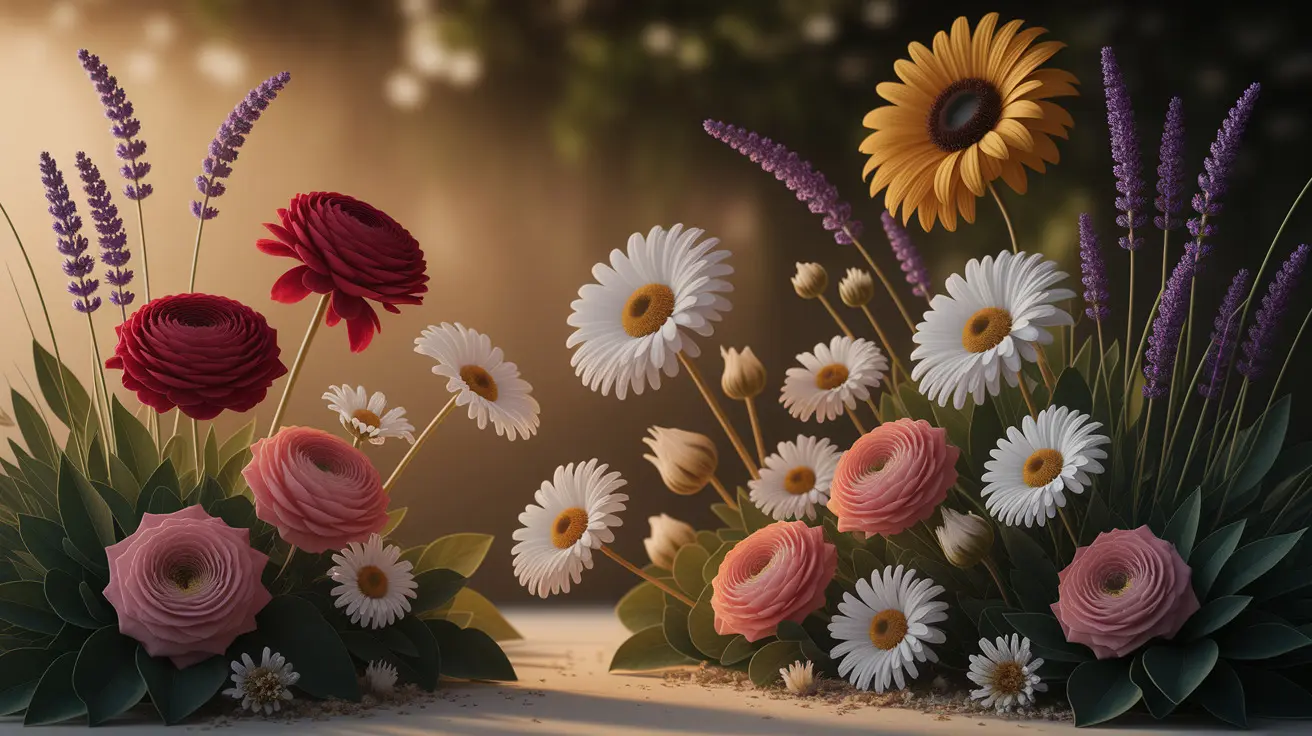
Conclusion
Dreams about flowers generally indicate emotion, connections, or transformation. Little hints give strength. A red rose on a spotless table can foreshadow impetuous passion or turbine power. A withered lily in a black hall can indicate sorrow you failed to meet. A meadow of wild flowers in the open sun can display freedom and optimism. Observe the room, the light, the dirt, the aroma. Tie it to a new incident or a scar. Maintain a brief dream journal and identify patterns as time goes on. Don't try to squeeze in a deep read. As always, take what gleans, leave the rest.
Got a flowery dream on your mind? Leave a quick comment, share the experience, or pose a pointed question. Let's clear it up and identify your next move.
Frequently Asked Questions
Recent Dreams
Other Dreams
Read more dream interpretations
Dive into the realm of dreams. Explore various dream interpretations. Enhance your understanding of what your dreams could be telling you.
About the author
We provide insights to harness the power of your dreams, improving not just your nighttime narrative, but your daily life as well.

